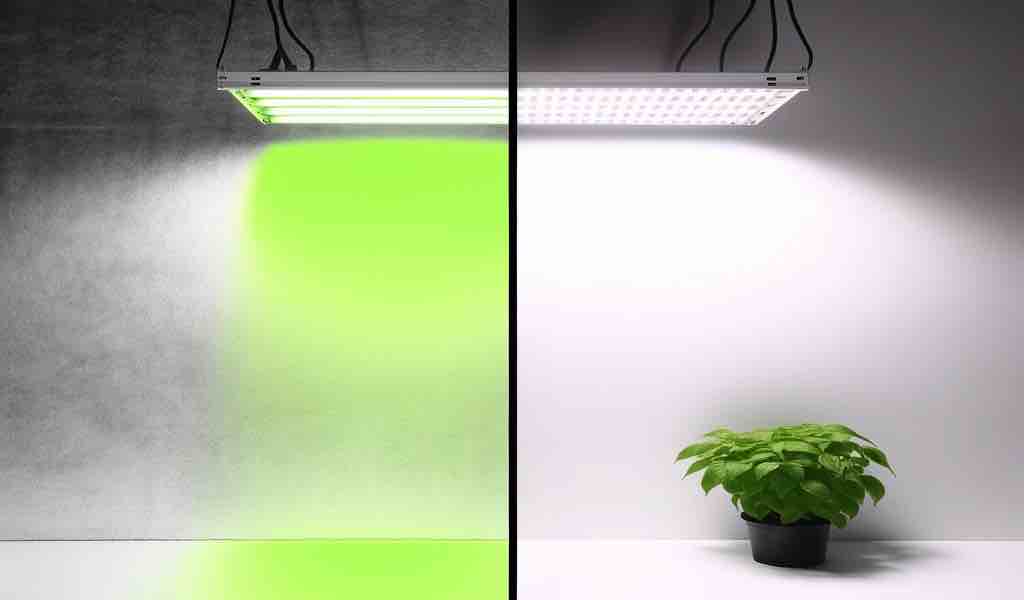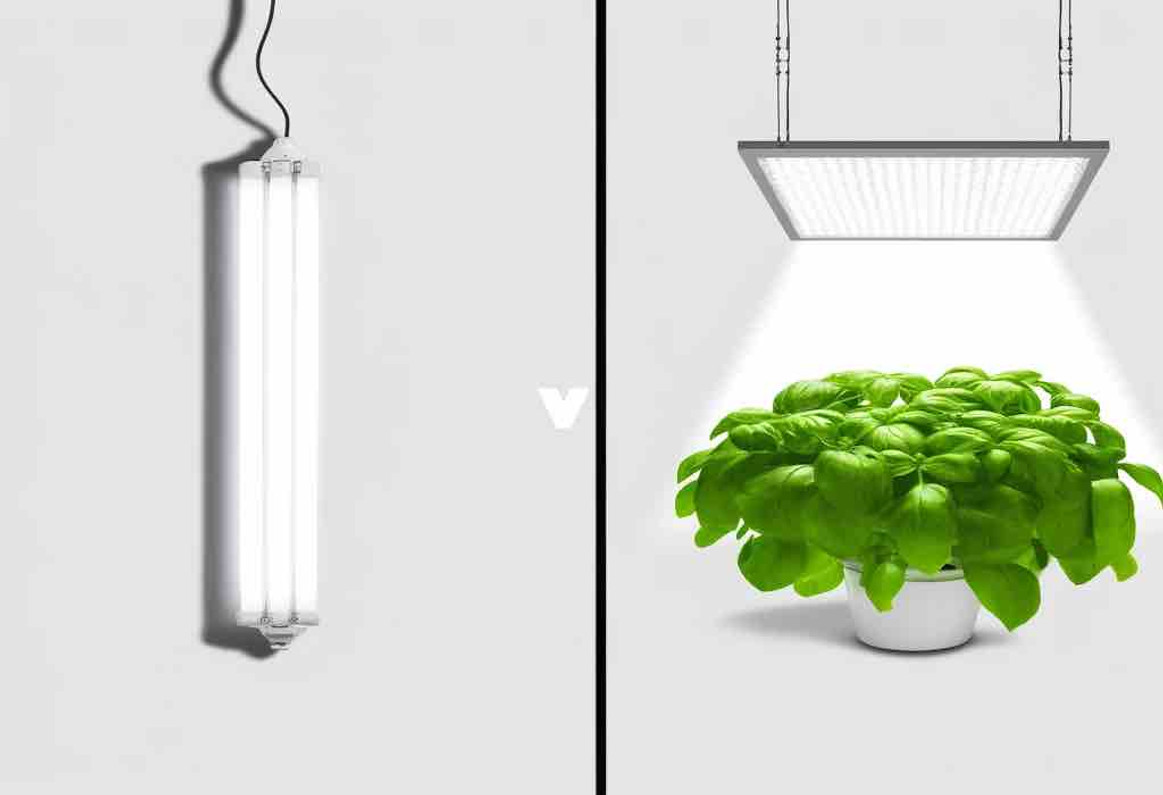Fluorescent vs. LED Grow Lights: A Head-to-Head Comparison
The debate between fluorescent and LED grow lights is a hot topic among indoor gardening enthusiasts. With the advancement of growth light technology, understanding the nuances between these two popular options has never been more critical. This article aims to shed light on the pros and cons of each, helping you make an informed decision for your indoor garden.
Key Takeaway of this Article
Whether you choose fluorescent or LED grow lights depends on your garden's needs. Consider energy efficiency, light spectrum, and initial vs. long-term costs. Tend Industrial Supplies is your go-to resource for all your grow light needs and expert advice.
Understanding Fluorescent Grow Lights
Fluorescent lights have been a staple in indoor gardening for decades. Available in tubes (like T5 and T8) and compact fluorescent lamps (CFLs), these lights are beloved for their wide spectrum of light, mimicking the sun's rays quite effectively for certain stages of plant growth. They're particularly advantageous for seedlings and young plants, promoting strong, healthy vegetative growth. However, fluorescent lights are not without their downsides. While they are more energy-efficient than traditional incandescent bulbs, they do not match up to the efficiency of LEDs. Additionally, their lifespan is shorter, and they can produce more heat than LEDs, which could require extra ventilation in your grow space.
Understanding LED Grow Lights
LED grow lights represent the cutting edge of grow light technology. They are lauded for their efficiency, longevity, and ability to tailor the light spectrum to the plant's specific needs. LEDs can deliver a precise color spectrum, including the red and blue light that is crucial for optimizing plant growth and development at every stage—from seedling to flowering. One of the most significant advantages of LED lights is their energy efficiency. They consume less power and emit less heat than fluorescent lights, making them an eco-friendly and cost-effective option in the long run. However, the initial investment in LED grow lights can be higher, which might deter some gardeners.
Both introductions set the stage for a deeper exploration of how to choose grow lights based on plant needs and a detailed comparison between fluorescent and LED ligh
Key Comparison Factors
When comparing fluorescent and LED grow lights, several factors stand out:
- Energy Efficiency: LEDs are significantly more energy-efficient than fluorescents, consuming less power for the same light output.
- Heat Output: LEDs emit less heat compared to fluorescents, reducing the need for additional cooling systems in your grow space.
- Lifespan and Cost: LED lights have a longer lifespan, often lasting thousands of hours longer than fluorescents. While the initial cost is higher, the long-term savings on replacements and energy bills can offset this.
Suitability for Different Plant Types
- Fluorescent Lights are best suited for seedlings, greens, and plants that require less intense light. They provide a broad spectrum, which is excellent for general growth but may need to be increased for plants with high-light needs.
- LED Lights: Their ability to customize the spectrum makes LEDs suitable for various plants, from seedlings to flowering species. Precision targeting specific light wavelengths can significantly enhance plant growth and yield.
User Experiences and Case Studies (Hypothetical for Readers)
Good User Experience: A Tale of Two Growers
Meet Sarah, the Budget-Conscious Beginner:
- Scenario: Sarah is new to indoor gardening and wants to grow simple herbs like basil and mint. She's on a tight budget and prioritizes affordability.
- Good User Experience with Fluorescents: Sarah finds a basic fluorescent grow light kit at her local hardware store. The setup is straightforward - she plugs it in and suspends it over her herb garden. The instructions are clear and easy to follow, and the light provides enough illumination for her herbs to grow steadily.
- Benefits: Sarah enjoys fresh herbs at home without breaking the bank. The fluorescent light is easy to use and requires minimal maintenance.
Meet John, the Plant Enthusiast:
- Scenario: John is an experienced gardener who wants to grow a variety of vegetables and flowers indoors year-round. He prioritizes optimizing plant growth and maximizing yields.
- Good User Experience with LEDs: John invests in a high-quality LED grow light system. The system allows him to customize the light spectrum for different stages of plant growth (vegetative and flowering) using adjustable dials or smartphone controls. The lights are dimmable for precise light intensity control, and the system runs cool, allowing John to position the lights closer to his plants for optimal growth.
- Benefits: John enjoys a thriving indoor garden with vibrant vegetables and flowers. The LED system's efficiency lowers its electricity bills, and its long lifespan minimizes replacements. The precise spectrum control maximizes plant growth and yields.
Case Study: The Community Garden Goes Green
Challenge: The local community garden has an indoor greenhouse where they grow vegetables for their food bank program. Their aging fluorescent grow lights could be more efficient and require frequent bulb replacements, impacting their budget and volunteer time.
Solution: The community garden researches and decides to invest in a modern LED grow light system.
Results:
- Reduced energy costs: The LED system's efficiency significantly reduces their electricity bills, freeing up resources for other areas.
- Lower maintenance: The long lifespan of LEDs minimizes replacement needs, allowing volunteers to focus on plant care.
- Improved Plant Growth: The optimized light spectrum of the LEDs leads to healthier plants, increased yields, and a more productive greenhouse.
Overall, the LED system provides a better user experience for the community garden by saving them money, reducing maintenance time, and allowing them to grow more food for their program.
Fluorescent and LED grow lights cater to different user needs. Understanding these needs and the user experience each technology provides helps growers make informed decisions.
Feedback from gardeners who have experimented with both types of lights tends to highlight the efficiency and versatility of LEDs, especially for those managing diverse plant collections. Case studies indicate that while fluorescents can be more budget-friendly initially, the investment in LEDs pays off through energy savings and reduced maintenance over time. Choosing the right grow light is at the core of interesting and profitable indoor gardening.

Quick Summary of COmparisons Between LED Grow Lights and Fluorescent
Here's a comparison of fluorescent vs. LED grow lights:
LED Grow Lights
Pros:
- Efficiency: LEDs use less energy than fluorescents to produce the same amount of light, resulting in lower electricity bills.
- Spectrum: LED lights can be designed to emit specific wavelengths of light crucial for plant growth, like red and blue. This can optimize plant growth and yields.
- Lifespan: LEDs typically last much longer (up to 10 times longer) than fluorescent bulbs, reducing maintenance and replacement costs.
- Heat: LEDs emit less heat than fluorescents, allowing them to be placed closer to plants without burning them.
- Durability: LEDs are more durable than fluorescent tubes and less likely to break or shatter.
Cons:
- Cost: LED grow lights generally have a higher upfront cost compared to fluorescents.
Fluorescent Grow Lights
Pros:
- Cost: Fluorescent grow lights are typically cheaper to buy initially than LEDs.
- Availability: They are widely available and can be found in most garden centers or hardware stores.
Cons:
- Efficiency: Compared to LEDs, fluorescents use more energy to produce the same amount of light.
- Spectrum: Fluorescent bulbs typically emit a broader light spectrum that may not be as optimized for plant growth as LEDs.
- Lifespan: Fluorescents have a shorter lifespan than LEDs, requiring more frequent replacements.
- Heat: Fluorescent lights emit more heat than LEDs, requiring them to be positioned farther from plants to avoid heat damage.
- Durability: Fluorescent tubes are fragile and more prone to breaking than LEDs.
While fluorescent grow lights are cheaper upfront, LED grow lights offer significant advantages in the long run due to their efficiency, spectrum, lifespan, and durability. LEDs are the better choice for serious growers or those looking to optimize plant growth and yields. Fluorescent lights might be a budget-friendly option for beginners with low-light requirement plants.
Conclusion
In the debate on fluorescent vs. LED grow lights, both options have their place in indoor gardening. The choice depends on your specific needs, budget, and the types of plants you intend to grow. With their energy efficiency, longevity, and customizable spectrum, LEDs offer a versatile solution for most indoor gardening needs. On the other hand, fluorescents can be a cost-effective choice for beginners or those with low-light plants.
Tend Industrial Supplies stands ready to assist you in navigating these options. Visit us atTendsupplies.com or contact sales@tendsupplies.com for expert guidance and a selection of grow lights that will illuminate your indoor gardening journey.
Frequently Asked Questions
- Which is more cost-effective in the long run, fluorescent or LED grow lights?
- LED grow lights are more cost-effective over time, thanks to their longer lifespan and lower energy consumption.
- Can I switch from fluorescent to LED lights for my existing indoor garden?
- Yes, transitioning to LED lights can be beneficial for your plants, but it's important to adapt your gardening practices to the new lighting conditions.
- Do LED grow lights really improve plant growth compared to fluorescents?
- Yes, the ability to customize the light spectrum with LEDs can lead to more efficient photosynthesis and potentially better plant growth and yield.
- Are LED grow lights safe for all types of plants?
- Yes, LED lights are generally safe for all plants, provided they're used correctly in terms of distance and duration.
- How do I dispose of my old fluorescent grow lights?
- Because they contain small amounts of mercury, it's important to recycle fluorescent bulbs properly. Check with your local waste management services for recycling programs.
Recent Posts
-
Air Compressor Safety Guidelines: Ensuring Safe Operation in Every Use
Air compressors are powerful machines used in various industries, from manufacturing to construction …26th Apr 2024 -
High-Pressure Air Compressors Explained: Powering Demanding Applications
High-pressure air compressors are pivotal in various industries, from automotive manufacturing to en …26th Apr 2024 -
Innovative Features in Modern Air Compressors: Revolutionizing Compressed Air Systems
Air compressors are indispensable in various industries, from automotive to manufacturing, providing …26th Apr 2024


